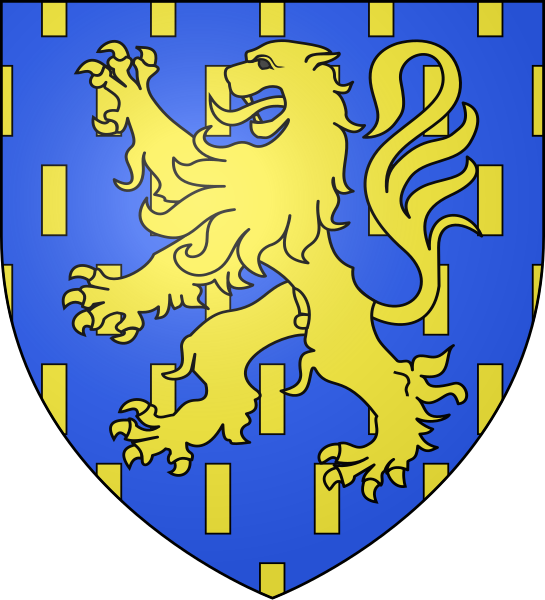I just got back from the Knowne World Heraldic and Scribal Symposium 2011 and it was excellent.I mostly went to heraldry classes, but attended two scribal classes as well. I have a lot of information to relay, so I'll break this into several posts. I'm also only giving a very rough sketch of what the teachers went over. If you get a chance to go to this symposium or these classes elsewhere, I highly encourage it.
 The first class was on period armorial style. If you were to take a random roll of arms from period and another from the SCA and put them side by side, there would be a lot of differences in what is and is not common. This comes about because after a millennium of time (give or take a few centuries), people's sense of aesthetics is going to change.
The first class was on period armorial style. If you were to take a random roll of arms from period and another from the SCA and put them side by side, there would be a lot of differences in what is and is not common. This comes about because after a millennium of time (give or take a few centuries), people's sense of aesthetics is going to change.
One of the first examples you learn about as a herald is the sense of balance or symmetry. If I were a medieval person with two animal heads side by side on my device, I would have them both facing the same way- probably to dexter. Your average SCA person is going to think the shield looks more pleasing when the heads are either both facing each other or both facing out. Think of it as cutting and pasting vs. reflecting.
They liked odd numbers in period. My artist fiancé likes to say that odd numbers (particularly three) have good composition. One, three, and five were all common numbers of charges to have in a single charge group. If on a chief, three was most common. That means that if I have bear heads on a band at the top of my shield, I probably have three of them (all facing the same way).
 Semys were pretty common in period. A semy is when you take an object,
draw a bunch of them, and scatter them across the shield- usually evenly
spaced, but sometimes there was some shifting around the edges to fit
things in. Objects at the edge of the shield which would be cut off can
either be cut off or removed completely- both happened in period and
both have been done in the SCA. Some common semys in period are: billets
(rectangles, you don't see this much in the SCA), crusily (a certain
type of cross), ermine (the fur group including pean, erminois, and
counter-ermine), roundelly (circles), and de lys (fleur-de-lys).
Semys were pretty common in period. A semy is when you take an object,
draw a bunch of them, and scatter them across the shield- usually evenly
spaced, but sometimes there was some shifting around the edges to fit
things in. Objects at the edge of the shield which would be cut off can
either be cut off or removed completely- both happened in period and
both have been done in the SCA. Some common semys in period are: billets
(rectangles, you don't see this much in the SCA), crusily (a certain
type of cross), ermine (the fur group including pean, erminois, and
counter-ermine), roundelly (circles), and de lys (fleur-de-lys). The shifting to fit things in the space given I mentioned was common. They liked to fill space and it's considered good heraldic practice to do so today. If I have three mullets (stars)- two in the top half of my shield and one in bottom, the bottom one might be a bit bigger since it has that entire space to fill. If I have a rampant lion (standing on one hind leg, all other feet in front like it's attacking something) on a pale (a vertical bar down the middle of the shield), I'm going to stretch it so it extends the entire length of the pale. And likewise if it's a passant lion (one front limb up, the rest on the ground as if walking) on a chief, again, I will stretch it so that it extends the length of the chief.
The shifting to fit things in the space given I mentioned was common. They liked to fill space and it's considered good heraldic practice to do so today. If I have three mullets (stars)- two in the top half of my shield and one in bottom, the bottom one might be a bit bigger since it has that entire space to fill. If I have a rampant lion (standing on one hind leg, all other feet in front like it's attacking something) on a pale (a vertical bar down the middle of the shield), I'm going to stretch it so it extends the entire length of the pale. And likewise if it's a passant lion (one front limb up, the rest on the ground as if walking) on a chief, again, I will stretch it so that it extends the length of the chief.
The teacher has a Hungarian persona so we learned about Hungarian armory as well: They didn't use chevrons at all. They liked to put crowns on animals. Crosses were not used as ordinaries. Trimounts (three mountains) with a critter on top were common, often with a blue and green field to make a landscape picture- something you don't see in the Anglo-Norman armory SCA heraldry is based on.
No comments:
Post a Comment